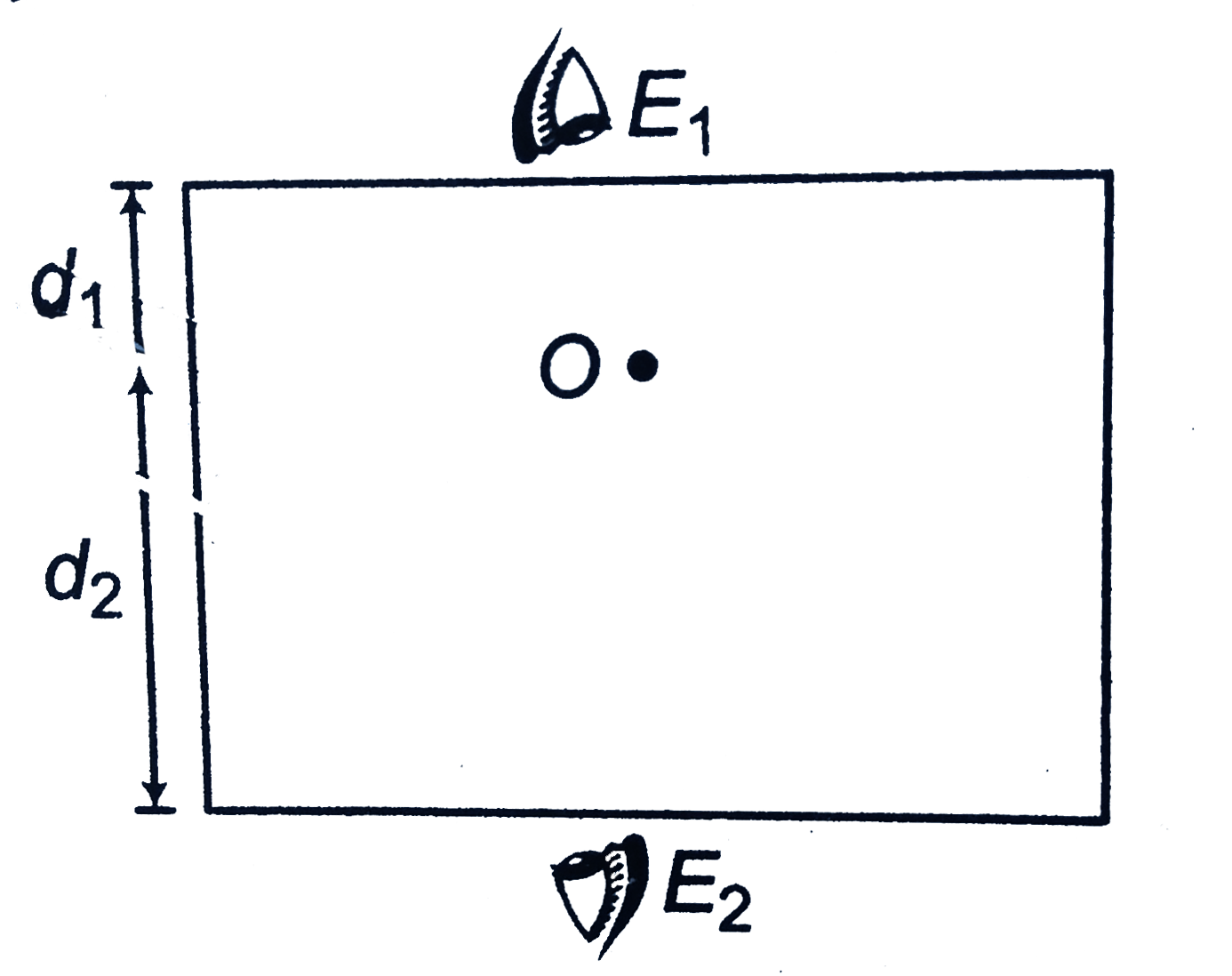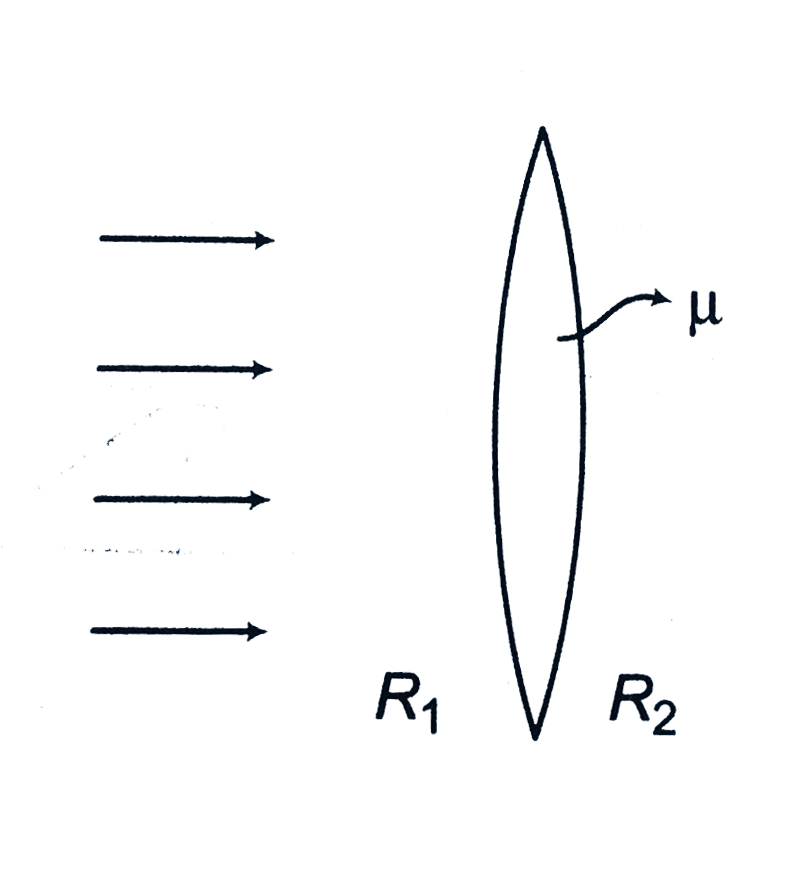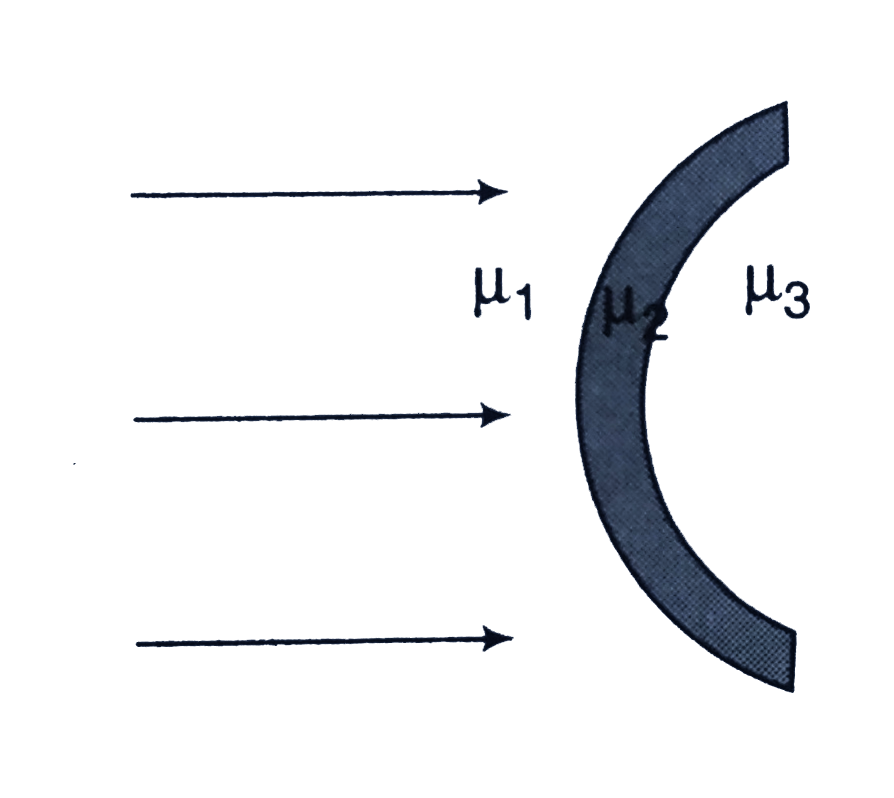Example Type 11 from DC PANDEY ENGLISH REFRACTION OF LIGHT for Class 12
| Class 12 | PHYSICS |
| Chapter | REFRACTION OF LIGHT |
| DC PANDEY ENGLISH | Example Type 11 |
| Medium | English |
| Academic Year | 2023-2024 |
Question 7
An observer can see through a pin-hole the top end of a thin rod of height h, placed as shown in the figure. The beaker height is 3h and its radius h. When the beaker is filled with a liquid up to a height 2h, he can see the lower end of the rod. Then the refractive index of the liquid is
 View Solution
View SolutionQuestion 28
A thin plano-convex lens of focal length f is split into two halves. One of the halves is shifted along the optical axis as shown in figure. The separation between object and image planes is 1.8 m. The magnification of the image, formed by one of the ball lens is 2. Find the focal length of the lens and separation between the two halves. Draw the ray diagram for image formation.
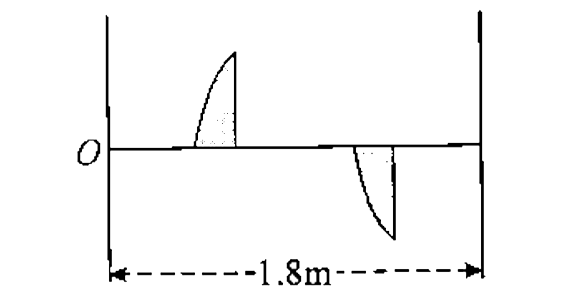 View Solution
View SolutionQuestion 32
Monochramatic light is incident on the pLane interface AB between two media of refractive indices μ1 and μ2(μ2>μ1) at an angle of incidence theta as shown in figure. The angle theta is infinitesimally greater thannte critical angle for the two media so thast total internal reflection takes place. Now, if a transparent slab DEFG of uniform thickness and of refractive inde μ2 is introduced on theinterface (as shown in figure ) , show that for any value of μ2 all light will ultimately be reflected back into medium II.
 View Solution
View SolutionQuestion 33
A right angled prism is to be made by selecting a proper material and the angles A and B (BleA), as shown in figure. It is desired that a ray of light incident on the face AB emerges parallel to the incident direction after two internal reflections.
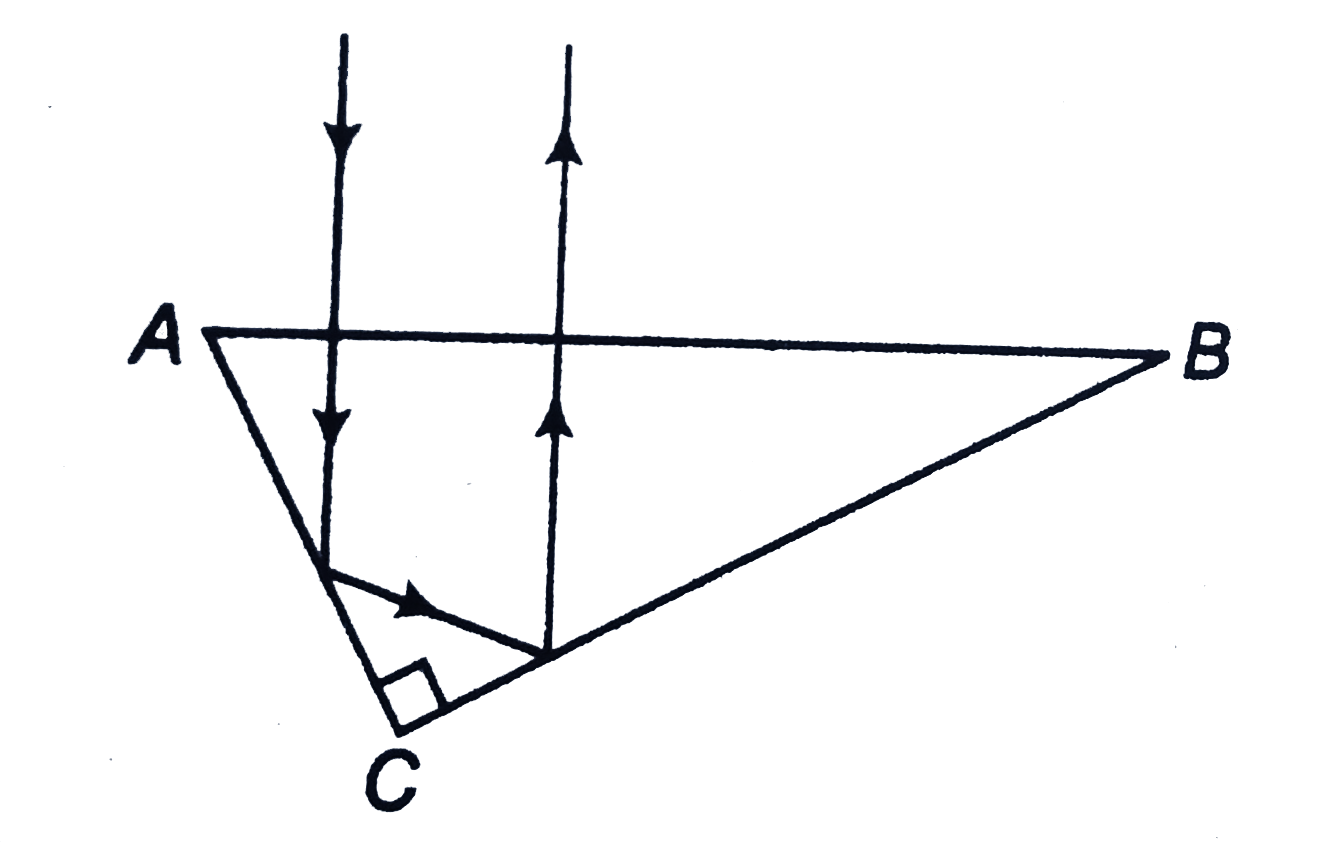
(a) What should be the minimum refractive index n for this to be possible?
(b) For n=53 is it possible to achieve this with the angle B equal to 30 degrees?View SolutionQuestion 38
Theory

In the figure, i is increased from 0∘to90∘. But ray of light is travelling from denser to rarer medium. Therefore, TIR will take place when i>θC, where θC=sin−1(1μ)=sin−1(1√2)=45∘
From 0∘−45∘, refraction and reflection both will take place. After 45∘, only reflection will take place.
Question Plot delta verses i graph between incident ray and refracted ray and, for i≤45∘ and with reflected ray for i≥45∘. View SolutionQuestion 40
A telescope has an objective of focal length 50cm and an eyepiece of focal length 5cm. The least distance of distinct vision is 25cm. The telescope is focused for distinct vision on a scale 2m away from the objective. Calculate (a) magnification produced and (b) separation between objective and eyepiece. View SolutionQuestion 45
A source of light is located at double focal length from a convergent lens. The focal length of the lens is f=30cm. At what distance from the lens should a flat mirror be placed, so that the rays reflected from the mirror are parallel after passing through the lens for the second time? View SolutionQuestion 46
Two equi-convex lenses of focal length 30cm and 70cm, made of material of refractive index=1.5, are held in contact coaxially by a rubber band round their edges.A liquidof refractive index 1.3 is introduced in the space between the lenses filling it completely. Find the position of the image of a luminous point object placed on teh axis of the combination lens at a distance of 90cm from it.View SolutionQuestion 47
Two thin converging lenses are placed on a common axis, so that the centre of one of them coincides with the focus of the other. An object is placed at a distance twice the focal length from the left hand lens. Where will its image be? What is the lateral magnification? The focal of each lens is f.View SolutionQuestion 49
A biconvex thin lens is prepared from glass of refractive index 3/2. The two bounding surfaces have equal radii of 25cm each. One of the surfaces is silvered from outside to make it reflecting. Where should an object be placed before this lens so that the image coincides with the object. View SolutionQuestion 50
An object is 5.0m to the left of a flat screen. A converging lens for which the focal length is f=0.8m is placed between object and screen.
(a) Show that two lens positions exist that form images on the screen and deremine how far these positions are from the object?
(b) How do the two images differ from each other? View SolutionQuestion 51
An object is midway between the lens and the mirror as shown. The mirror's radius of curvature is 20.0 cm and the lens has a focal length of -16.7 cm, Considering only the rays that leaves the object and travels first towards the mirror, locate the final image formed by this system. Is this image real or virtual? Is it upright or inverted? What is the overall magnificaiton?
 View Solution
View SolutionQuestion 53
A solid glass sphere with radius R and an index of refraction 1.5 is silvered over one hemisphere. A small object is located on the axis of the sphere at a distance 2R to the left of the vertex of the unsilvered hemisphere. Find the position of final image after all refractions and reflection have taken place. View SolutionQuestion 54
A converging lens forms a five fold magnified image of an object. The screen is moved towards the object by a distance d=0.5m, and the lens is shifted so that the image has the same size as the object. Find the power of lens and the initial distance between the object and the screen. View Solution
All Exercises from DC PANDEY ENGLISH Class 12 PHYSICS REFRACTION OF LIGHT
- EXERCISE 31.1
- EXERCISE 31.2
- EXERCISE 31.4
- EXERCISE 31.5
- EXERCISE 31.6
- EXERCISE 31.7
- EXERCISE 31.8
- INTRODUCTORY EXERCISE
- LEVEL 1 ASSERTION AND REASON
- LEVEL 1 OBJECTIVE
- LEVEL 1 SUBJECTIVE
- LEVEL 2 COMPREHENSION BASED
- LEVEL 2 MORE THAN ONE CORRECT
- LEVEL 2 SINGLE CORRECT
- LEVEL 2 SUBJECTIVE
- MORE THAN ONE CORRECT OPTION
- OBJECTIVE QUESTIONS
- SINGLE CORRECT OPTION
- SUBJECTIVE QUESTIONS
- EXAMPLE
- EXAMPLE TYPE 10
- EXAMPLE TYPE 11
- SOLVED EXAMPLE

